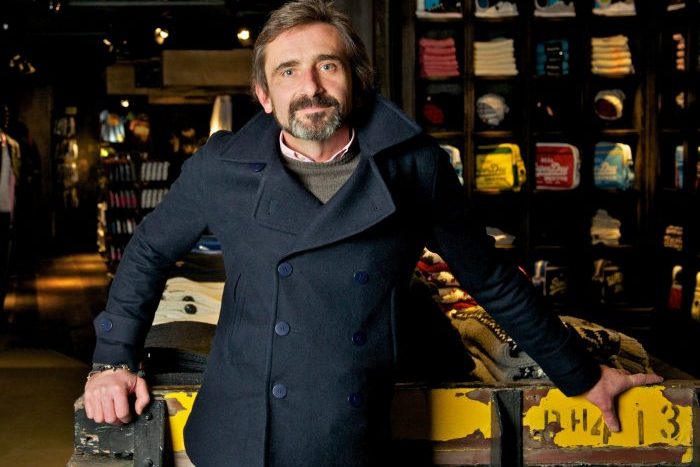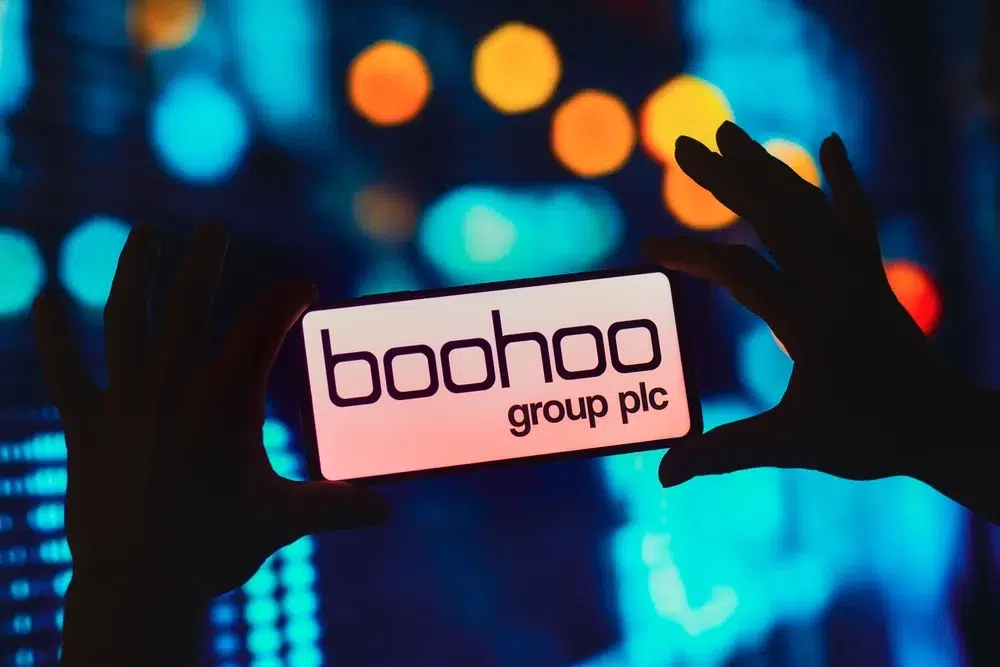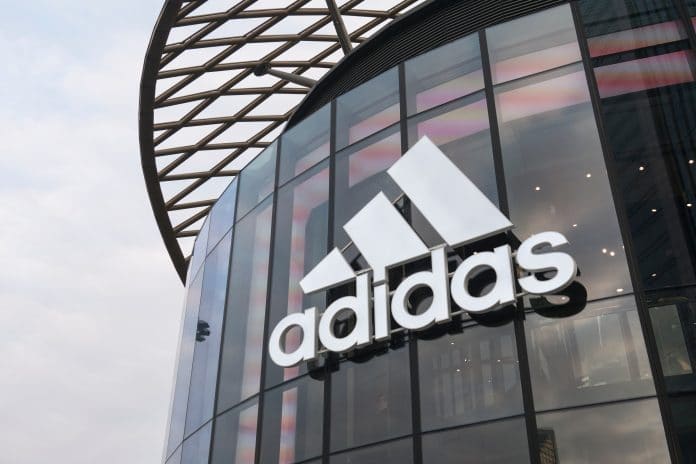Superdry’s humble beginnings can be traced back to 2003, with a stall in a Cheltenham market set up Julian Dunkerton and James Holder. The businessmen both spotted a “huge gap” in the UK men’s market and the fashion retailer, known for fusing vintage Americana and Japanese-inspired graphics, was born after an “inspirational trip to Tokyo”.
Superdry is now found in more than 100 countries worldwide – and has has the backing of celebrities such as David Beckham and Idris Elba. But in the past year or so, it has come across hard times with sluggish sales and profits as it lagged behind in fashion and online retail trends.
As it prepared for Black Friday last year, the retailer reported a 23.3 per cent drop first half-revenue. The decline was driven by a 32.4 per cent plunge in like-for-like store trading during the period.

Superdry blamed the Covid-19 pandemic for “disrupting” its store and wholesale channels as lockdowns and tiered restrictions affected much of the half-year period. However, it found that ecommerce sales had surged by 49.8 per cent thanks to customers shifting online – although this failed to offset the overall decline.
At the time, the fashion retailer said it would focus on strengthening its online operations to reach customers, “and bring our brand reset to life”.
As indicated earlier, this was not the first time Superdry posted woeful trading results. In July 2019, it reported a pre-tax loss of £85.4 million, and in September 2020, said profits dropped by a colossal 210 per cent.
For a once trendy brand, best known for its jackets and hoodies, the harsh reality of the new consumer-driven world of fashion came as a sharp shock.

Superdry is currently in the midst of chartering a new course after a lengthy boardroom battle that grabbed headlines in 2019.
The drawn-out battle saw Dunkerton, who also holds a 20 per cent stake in the fashion retailer, return as interim chief executive that year. And just a month ago, he was made chief executive on a permanent basis ahead of his interim contract expiring in April.
The boardroom struggle had started after Dunkerton first stepped down as chief executive in March 2018. Following his exit, he staged a campaign in the media which saw him criticise the Superdry executive management and their business strategy amidst successive trading updates and profit warnings that were far from rosy.
This led to his dramatic return to the board in April 2019, after a shareholder vote that saw him marginally win. Euan Sutherland, who had served as chief executive since 2014, was ousted following Dunkerton’s re-election, and most of the board resigned as well.

Upon his return as interim chief executive, Dunkerton cancelled Superdry’s planned debut kidswear collection and pulled out of a footwear licensing deal with Pentland brands. He also said he wanted Superdry to focus on the jackets and hoodies that it was renowned for, and offer a far wider range of variations on the web.
Last December, Superdry underwent a boardroom reshuffle that cemented Dunkerton’s return and entailed the appointment of new chief operating officer Silvana Bonello, as well as the resignation of its chairman Peter Williams – who had been appointed to the role in April 2019 to aid Dunkerton’s return.
“Superdry is not cheap or agile enough to compete with fast fashion, nor desirable enough to compete with luxury”
Catherine Erdly, founder of retail management consultancy The Resilient Retail Club, said Dunkerton rejoined Superdry after his frustration at previous management’s ability to understand the fashion brand.
“It would make sense if his master plan really centres around reconnecting the customer with the product, which is after all that made the business successful in the first place,” she told Retail Gazette.
“For a long time Superdry was seen as the go-to destination for ‘cool dads’ however one could argue that the brand has lost some relevancy over the years and that will be what Dunkerton will need to work to re-establish.”
Despite uncertainty around the pandemic, Superdry said it was making good progress with its strategy and brand reset. Key to revitalising its turnaround is the way Superdry has segmented its shoppers into nine customer profiles based around buying behaviour and trends.
These have been combined with the brand’s four clear consumer style choices: Casual & Vintage, Sophisticated & Minimal, Sport, and Streetwear & Energy – all of which allows them to provide customers with a much better targeted product offering.
Erdly said that with non-essential retail being closed at this time and the outlook for 2021 looking uncertain, all retailers need to focus on their online retail presence. She said Superdry was no different.
“They have an opportunity to connect with customers digitally from the comfort of their own homes and as physical shops reopen they have the opportunity to really explore how the customer journey has evolved over the years and how it moves between the online and offline channels throughout,” she explained.
“Any focus on their digital channels needs to take into account that they are far more interlinked with stores than many high street retailers have really given that importance to.”
“Superdry’s strategy to ‘engage with customers through digital channels’, is clearly vital”
Retail expert Nelson Blackley said Superdry has been previously criticised for a lack of social engagement, with relatively few followers on Instagram compared with rivals such as Hollister.
Elliott Jacobs, consulting director at commerce agency LiveArea, agreed. He said “there’s a lot of catching up to do”.
“Burberry has 18 million followers on Instagram, Boohoo as seven million. Superdry has 600,000,” Jacobs told Retail Gazette.
“Superdry’s strategy to ‘engage with customers through digital channels’, is clearly vital, but very late in the day.
“The likes of Burberry lead the way with connected social media stores and focus on data and analytics, while Boohoo’s investment in logistics automation appeal to today’s on-demand consumer.”
Blackley argued that Superdry has not taken advantage of online influencers but was clearly seeking to change things.
The search for change was evident following the appointment of Boohoo’s international director Justin Lodge as new chief marketing officer in September. Lodge was drafted in to spearhead Superdry’s development of ecommerce and influencer marketing.
“Superdry are planning to introduce more short-order products in 2021, allowing them to offer more choice online and react to trends in a much more responsive way,” Blackley said.
“They will also increase their drops of limited-edition products throughout each season, releasing online exclusives to capitalise on trends, and using social media to help build engagement.”
Erdly added that Superdry has struggled with the inability to connect with customers who are increasingly concerned with shopping in a way that reflects their ethics and values. She said this year, the retailer needed to be cautious of customers’ values, particularly after a year that saw the collapse of several fashion retailers.

“Superdry should focus on their sustainable ranges as a way of reconnecting with those customers who want to make good choices when it comes to buying clothes,” Erdly told Retail Gazette.
“Fast fashion and fashion, in general, has come under a huge amount of scrutiny over the last few years in terms of its environmental impact and the amount of waste that is created both during the manufacturing process.
“It would make sense that in order to move forward Superdry will want to connect with this conscious consumer and prove to them that they can offer great looking clothes that are made sustainably.”
Jacobs explained that Superdry had previously attempted to diversify its product range through sportswear and organic cotton items. However, it was not alone in this strategy, and, with little else to differentiate the brand from its competitors, it’s unclear how Superdry’s offering would stand out.
“The issue with Superdry appears to be one of brand perception, and who are the brand’s target market,” Jacobs said.
“Whether or not a brand ‘reset’ can boost its perception, or dilute it further, remains to be seen. Superdry appears to think of itself as a premium brand, which jars slightly with its customer experience and how it is actually perceived.
“Superdry is not cheap or agile enough to compete with fast fashion, nor desirable enough to compete with luxury, and whilst the impact of the pandemic has dealt the brand another blow, Superdry was struggling well before the virus struck, with four consecutive years of declining profits.”
While Superdry is known for its jackets and hoodies, over the years the public has seen it release additional ranges such as water bottles, pencil cases and watches. Arguably, its product diversification could be adversely affecting its business.
“Shoppers who enter a Superdry shop to buy a hoodie shouldn’t walk out with a pencil case,” Jacobs told Retail Gazette.
“Product diversification shouldn’t harm the way a brand is perceived or how its core products are purchased if delivered effectively.”
With new executives in place and its co-founder, Julian Dunkerton, at the helm permanently, Superdry may well be back in the spotlight this year. Dunkerton has laid out his plans, with a focus on more contemporary ranges and sustainability.
The recent campaign launch with international football star Neymar to promote Superdry’s sustainable underwear range suggests a move towards these notions, as well as trying to appeal to a younger demographic, with an interest in sports.
However, it’s no secret that Dunkerton has a huge task on his hands to restore the brand amidst an already-struggling retail market. Only time will tell.
Click here to sign up to Retail Gazette’s free daily email newsletter


















